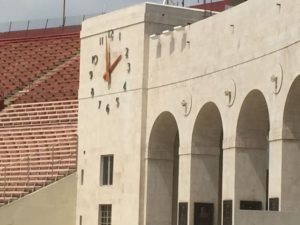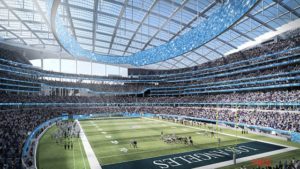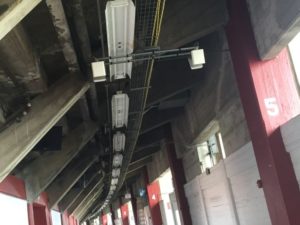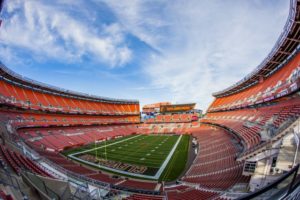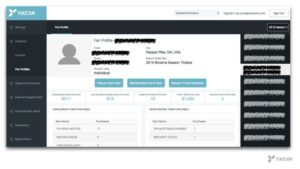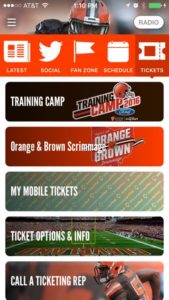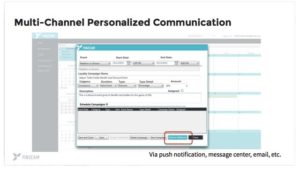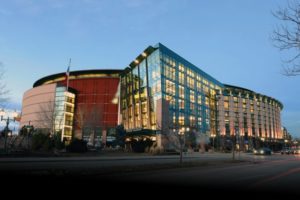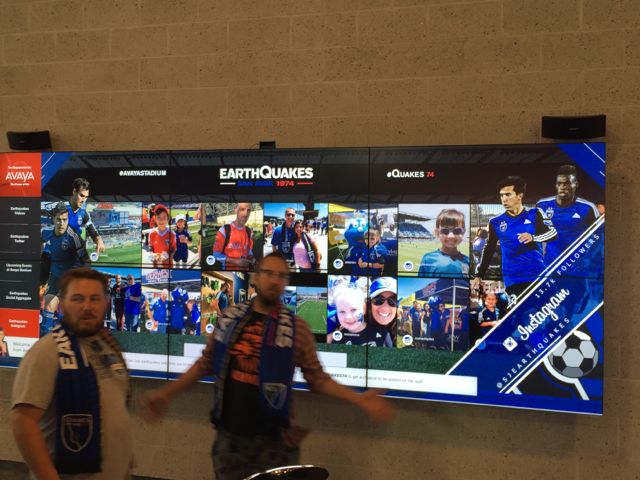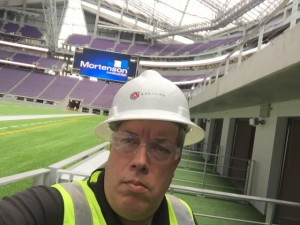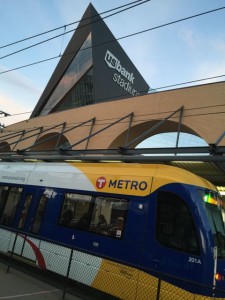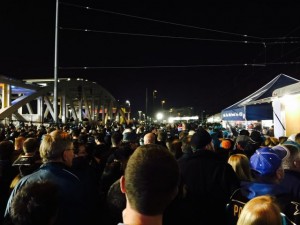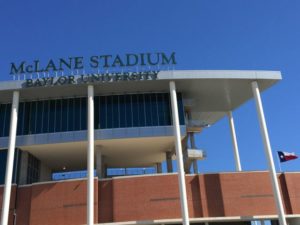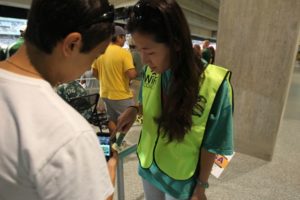But this is the Los Angeles Rams, and nothing about the team’s trajectory is normal, including the technology. So after making good on a longstanding threat to move the team from St. Louis, owner Stan Kroenke in January broke ground on a new, $2.6 billion “NFL Disneyland” venue in the LA suburb of Inglewood. It’s expected to be ready in time for the 2019 season. So for right now, the returning Rams will play at the Los Angeles Coliseum.
While it has an established and robust DAS system, the Coliseum has no dedicated, fan-facing Wi-Fi network, just as the Edward Jones Dome in St. Louis didn’t. But it’s LA, baby. Kanye. Jack. Celebrity sightings means more bandwidth is needed, not less. But the first appearance of Wi-Fi at the venerable Coliseum won’t be for fans, but for operations.
Relying on DAS for fan wireless
Editor’s note: This profile is from our most recent STADIUM TECH REPORT, the Q2 issue which contains a feature story on Wi-Fi analytics, and a sneak peek of the Minnesota Vikings’ new US Bank Stadium. DOWNLOAD YOUR FREE COPY today!
So when the Rams play their first pre-season game at the Coliseum in August against the Dallas Cowboys, fans will have to rely on the DAS network for connectivity. AT&T, Verizon Wireless and more recently T-Mobile, are the DAS carriers; Sprint trucks in a COW for USC games.The Rams will bring in their own Wi-Fi for communications to and from the sidelines, along with their Microsoft Surface tablets, according to Derek Thatcher, IT manager at the Coliseum and an employee of USC, which oversees and administers the venue for Los Angeles County. There will also be private Wi-Fi in the locker rooms and the officiating rooms. Thatcher’s working closely with the Rams and the NFL, including one of the NFL’s frequency coordinators, to ensure everybody has the bandwidth they need.
Separate from the Rams and the NFL, USC is undertaking a major renovation of the Coliseum, home to the university’s storied football team. The $270 million project cost will be funded entirely by USC Athletics from capital gifts, sponsorship revenue, non-USC athletic events at the Coliseum, and donor naming opportunities. “The project will not require any student fees or general university, local, state or federal funds,” the university said on ColiseumRenovation.com.
In addition to significant expansion of luxury suites and press box facilities (which houses most the IT and networking gear for the Coliseum), USC will also be adding public Wi-Fi and is talking with different vendors about their requirements.
It is worth noting that Aruba Networks provides wireless networking for most of the adjacent USC campus (more than 5,000 APs), including the Galen Center and USC’s healthcare facilities. Thatcher emphasized the bidding was open to all vendors.Waiting for the new stadium to be built
The Coliseum’s current capacity is 93,600 and the NFL will use 80,000 seats; post-renovation, capacity will be 77,500, due to replacement of all seats and addition of handrails to the aisles. That’s good news for Wi-Fi engineers, since the Coliseum’s bowl design has no overhangs to speak of; DAS antennas are mounted to poles that ring the stadium, and also above the bowl’s entry and exit tunnels. “Underseat AP design is expensive… we could end up with underseat and handrail,” Thatcher told Mobile Sports Report. “We’re looking at all possible solutions.”
The renovation is scheduled to begin right after USC’s 2017 football season ends and is expected to be done in time for the 2019 opener. The university said it will plan the construction schedule so that 2018 season can still be played at the Coliseum.
The other wild card in the Coliseum’s future is the Los Angeles bid to host the 2024 Summer Olympics. The city has already done the honors before (1932, 1984) and the Coliseum served as the Olympic Stadium both times; a third time hosting would be unprecedented. But because of LA’s experience, coupled with plenty of already-built sporting venues to handle a plethora of events and requirements, it was natural for the US Olympic Committee to turn to LA once Boston bailed.
The city’s bid includes $300 million for additional renovations to the Coliseum.
Rome, Paris and Budapest are also competing to host the games. The winner will be announced by the International Olympic Committee in September 2017.
